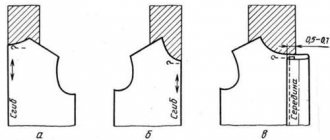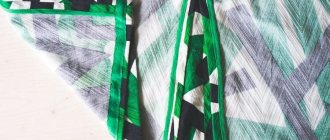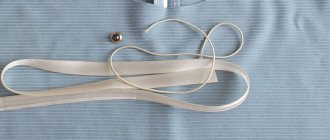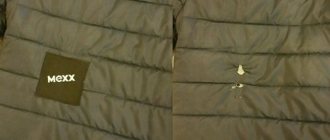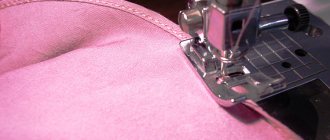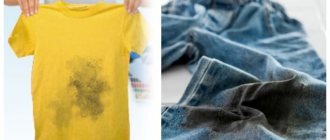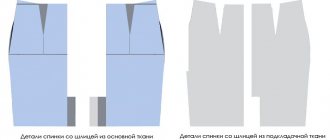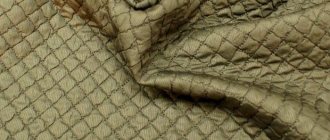At a price of 50 rubles per sq. m.
With a positive conclusion from the Ministry of Emergency Situations
from a company with 14 years of experience
Ask a Question
Interior materials are easily flammable, and the flame spreads through the fabrics at great speed. For this reason, flame retardancy of fabrics is of great importance.
The scope of our fire protection is shopping malls, educational institutions, administrative buildings, train stations and other public places where the risk of fire is increased.
We offer fire protection for any textile materials.
We produce:
- Fire retardant treatment of carpets and carpeting, paths on evacuation routes;
- Fire retardant impregnation of curtains, textiles, curtains, fabric decor
- Treatment of curtains;
- Fire protection of workwear.
We offer fire-retardant treatment of fabrics in Moscow and the Moscow region
With fireproofing work, we save people’s lives and guarantee that the protective material is capable of holding back direct flames for 120 minutes
We apply impregnations using sprayers, brushes, rollers and by dipping the material into the solution.
In our work, we use special compounds for processing textiles, bioprenes, which, when exposed to high temperatures, are capable of forming a special film. In this case, the surface of the fabric becomes airtight and the ignition stops. Bioprenes also reduce the volume of smoke generated.
Thanks to the work of our specialists, you will reduce the possibility of fires to a minimum.
We have already protected more than 70 objects and guarantee increased resistance to direct exposure to fire and high temperatures
Call: 8 (495) 150-5-987 and consult for free!
Prices for fire protection fabrics
The cost of fire protection is calculated according to the volume and complexity of the work, taking into account the composition, type and density of the material.
Estimated cost of fire retardant fabric treatment
| Name | Fire danger indicator | Price |
| Fire retardant treatment of fabrics (carpets, curtains, stage curtains, textile decorations) | from 70 rub. for 1 sq.m. | |
| Impregnation of carpets | For fire hazard class KM2 (escape routes, auditoriums) | from 140 rub. for 1 sq.m. |
Calculation of the cost of fire protection work depends on many factors and on regulatory and technical requirements.
You can always find out the exact cost of fire protection for fabrics from a specialist from our company by calling: 8 (495) 150-5-987. You can also use the electronic application form on the website.
is a certified dealer of the best domestic and foreign manufacturers of fireproof materials.
Types of fire retardant treatment of fabrics
We offer the following types of fire retardant fabric treatment :
- fire retardant treatment of curtains, curtains;
- fire retardant treatment of textile materials on evacuation routes;
- fire protection of decorative fabric elements in places with a large presence of people (cafes, restaurants, cinemas, clubs, etc.);
- fire retardant treatment of carpets;
- fire retardant treatment of carpet;
- fire retardant treatment of workwear.
The cost of fire retardant treatment depends on the fire retardant material used, the characteristics of the materials being processed, availability during processing, etc.
Method of fire-retardant treatment of fabrics.
Today, fire protection of fabrics is carried out by treating them with fire retardants (special fire retardant compounds) by dipping or spraying until the material is completely saturated. Modern flame retardants do not change color, do not leave streaks or unpleasant odors. After treatment, the fabric or carpet does not change in appearance and does not acquire foreign odors. It is almost impossible to visually distinguish processed material from untreated material. The process of fire-retardant treatment of textile products does not take much time; the treatment of furniture upholstery does not require dismantling the furniture. It is important to remember that over time, fire retardant impregnation of textiles loses its effect. As a rule, fabrics are impregnated for five years. But if you often clean and wash the material, then you will need to update the impregnation more often.
That's why 70 customers have already chosen us
- We treat fabrics only with high-quality and safe, odorless compounds.
- We guarantee that the color, pattern and all fabric properties and texture will remain unchanged.
- We treat with fire retardant compounds without traces, stains or streaks.
- We carefully select fire-retardant compounds, taking into account the tissue structure;
- We work according to regulatory documents (GOST R 50810-95 and NPB 257-02);
Important!
All compositions have hygienic certificates and allow you to get the maximum effect without damaging the materials themselves.
Advantages of fire retardant composition for fabric KOS-T
- Does not change the color or structure of the fabric.
- Lasts up to 3 years (without washing and wet cleaning).
- Eco-friendly - after application it does not emit substances harmful to humans and animals.
- Fire and explosion proof during storage.
The flame-retardant composition for KOS-T fabric meets the requirements of GOST R 50810-95, which is confirmed by a certificate of conformity:
NSOPB.RU.PR037/3.N.00269 No. 025507 from 05/17/2016 to 05/16/2019
Photos on fire protection
Fire protection of fabric in a restaurant in the elite village of Zhukovka
TechStroyGarant specialists completed work on applying the fire retardant composition "NORTEX KP" to carpets and the fire retardant composition "NORTEX S" to semi-synthetic curtains in the restaurant "Moscow Nights" in the Odintsovo district.
Read more >>
Fire protection of escape routes in the European shopping center
TechStroyGarant specialists performed fire protection of escape routes (stairs) in the Victoria Secret women's clothing store (EUROPEYSKY shopping center) in Moscow. Fire retardant treatment using fire retardant acrylic paint in an organic solvent.
Read more >>
Fire retardant and anti-corrosion treatment in the elite residential complex Polyanka 44
Fire protection of load-bearing metal structures and anti-corrosion treatment of the construction site of a residential complex with an underground parking lot “Polyanka 44” has been completed. The reconstruction of the residential complex is being carried out by a large general contractor "CODEST". The most modern and reliable fireproof materials Promat were used.
Read more >>
How to order fire protection fabrics from our company
- You can order fire protection work in Moscow or another region by phone or on the website.
- Our specialist accepts the application and discusses with you the details of ensuring the security of the facility.
- We coordinate with you a visit to the site and examine the scope of work: we select a fire protection method and materials, draw up a plan, determine the deadlines, and agree on the estimate.
- We carry out processing on site or in the campaign premises, drying the material.
- We test the samples with fire (the fabric should not burn for more than 5 minutes) and water to check the consistency of the composition.
- We hand over the work of the fire laboratory, after which you receive a certificate of completion, a license from the Ministry of Emergency Situations, a certificate for the fire resistance of materials, and a conclusion from a fire laboratory expert.
- We monitor the quality of fire-resistant coatings annually.
We provide comprehensive turnkey services and guarantee high quality of work performed.
The fire protection requirements for fabrics that we follow are determined by GOST and other basic standards - NPB (fire safety standards), ISO, SNiP.
Our licenses
License No. 50-B/00378
SRO extract N0000627
More details
The Pozhvet company produces fire-retardant treatment of fabrics in Moscow and St. Petersburg
We will help you create optimal fire protection, taking into account all the requirements of fire safety standards, regulations, and of course the capabilities and wishes of the customer. Our specialists undergo special training, this guarantees the high quality of the work we perform. They will be completed on time and in compliance with fire safety standards and regulations.
Our company has a license from the FSB, permission to work with state secrets and can carry out fire retardant treatment of structures at facilities of any level of secrecy
To submit an application for fire protection of fabrics, you need to do one of the following:
- submit a request on the website,
- call toll free
- send a request by email
- or write to an online consultant
Our specialist will contact you within the next two business hours.
Do you need fireproofing treatment for fabrics? Contact us! carries out work to professionally achieve the required fire resistance limit of any materials, including fabric.
Our successful work on fire-resistant fabric treatment in Moscow and St. Petersburg is seen by hundreds of thousands of people every day; we constantly carry out the following activities:
- stage curtain fire protection;
- fire protection of curtains;
- fire protection of carpets;
- fire protection of furniture upholstery;
- fire protection of textile decorations.
We work as quickly as possible. We successfully solve even the most complex problems. The cost of fire retardant treatment of fabric is 180 rubles per 1 sq. m.
When fire retardant treatment of textile materials is required
First of all, fire protection measures for fabrics must be taken in places with large crowds of people, because... the risk of accidental fire in such areas is significantly higher. Material flammability testing and processing are carried out at least once every two years.
Upon completion of processing, drapes, curtains and other fabrics for household use (not fire retardant) must comply with the group of flame retardant materials (GOST R 50810). These include:
- carpets, carpeting;
- curtains and curtains;
- drapery of upholstered furniture;
- thermal insulating fabrics used for covers and upholstery;
- bed dress;
- workwear.
The main tasks of fire-retardant fabric treatment:
- preventing accidental fires;
- localization of flame spread;
- reducing the amount of toxic fumes;
- reduction of smoke emission.
More than 10 years of experience in fire protection work! Over 100 completed objects! We carry out any tasks of increased complexity in fire protection of metal, fire protection of wood, fire protection of air ducts and cable lines.
Compositions and methods of fire protection of fabric
The composition and technology for fire-retardant treatment of fabrics are selected in accordance with regulatory requirements (GOST, NPB, etc.), based on two main criteria:
- required fire protection limit and degree of biological protection;
- textile material.
Basic fire protection technologies for textiles (GOST):
- fireproof impregnations;
- coating the surface of fabrics with fire-retardant coatings (increases fire resistance up to 3 hours);
- use of fire-retardant fabrics manufactured in factories.
Fabrics originally intended for fire retardant purposes are subjected to factory processing:
- uniforms for welding and other flammable work;
- fireproof asbestos fabric, etc.
Factory processing is carried out by immersing the material in a container with a fire retardant compound and then drying it. Samples must undergo fire testing. In addition, mechanical methods of fabric fire protection are used in production - for example, reinforcing the material with steel wire.
Important!
Upholstered furniture and carpets can be processed without dismantling directly at the site of use.
In this case, the surface is generously moistened with the selected composition. This can be done while cleaning the product by mixing the fire retardant with washing liquid in equal parts. In addition to imparting fire-retardant properties to the material, impregnations and paint coatings help reduce the level of smoke formation and toxic emissions in the event of fire. The composition is applied to the surface of the product using airless spraying units.
Another way to provide fire protection is to use fire-resistant fabric. This method is used when impregnation/painting materials are for some reason impossible or impractical. Furniture covers are made from fire-resistant fabric. Reflective fiberglass fabric can be used to insulate concrete and steel structures.
note
See how our specialists treated wooden structures with fire retardant compounds from the manufacturer NORT in Congress.
Surface impregnation of cellulose-based textiles can also be carried out using fire retardant compounds for wood (fire protection category 1 agents). Synthetics always require special compounds. They are also used for combined fabrics containing 35 percent or more polymer. The higher the polymer content, the higher the consumption of fire retardant.
In addition to the chemical composition, the choice of fire protection product and technology is also influenced by other characteristics of the fabric - structure, surface density, thickness, etc.
FIRE PROTECTION
Fire protection of fabrics and carpets
The variety of types of fabrics, their colors and designs serves to achieve the main goal - to improve oneself, home and life in general. Currently, textile materials are found almost everywhere, be it a residential building, industrial buildings or office premises. Various types of fabrics and materials based on them are capable of extremely rapid spread of fire, and this fire can start from the smallest spark. According to fire protection standards, it is necessary to ensure the safety of people where they are in large numbers. The best solution for maximizing fire protection of fabrics and carpets is fire-retardant treatment (impregnation) of fabrics with special compounds.
After such impregnation, textile products remain in their original form and do not lose their external qualities. Fire-retardant impregnation of fabrics and carpets allows them to be classified as:
- Flame-resistant fabrics (according to GOST R 50810-95, excluding clause 5.3)
- Fabrics with moderate smoke-generating ability D2 (according to GOST 12.1.044-89)
- Fabrics with moderate toxicity of combustion products T2 (according to GOST 12.1.044-89)
- Fabrics that are not flammable (according to GOST R 53294-2009)
These measures are especially necessary for processing textile materials located in evacuation sites, theaters, kindergartens, schools, and exhibitions. Fire protection of curtains and fire protection of curtains, as well as fire protection of tulle on windows, will significantly slow down the spread of flames in the room, acting as a kind of barrier.
The process of impregnating textile products with a fire-retardant composition does not take much time, and fire protection of furniture upholstery does not require dismantling and disassembling of furniture. It is also necessary to know that over time, fire retardant impregnation of textile products loses its properties and effect. If you frequently wash and clean the material, it is necessary to renew the impregnation more often.
In accordance with the Decree of the Government of the Russian Federation of April 25, 2012 N 390 “On fire protection”, fabrics treated with impregnations after the expiration of the fire retardant treatment and in the event of loss of fire retardant properties of the compositions must be re-treated.
Our organization offers a full range of measures to carry out fire retardant treatment of various types of fabrics and carpets to provide better resistance to combustion processes and to raise the flammability threshold.
carpets
prices from 120 rubles
protection from direct flame exposure up to 4 hours
ORDER
Methods of fire protection of materials
There are two main methods of fire protection of materials:
- processing, the purpose of which is to create a coating of fire-resistant, sparingly soluble compounds on the surface;
- modification of the fibers themselves, in which the molecules of the fire retardant composition form stable bonds with polymer molecules.
Requirements for applying fire retardant:
These requirements are mandatory for fire protection of textiles:
- the material being processed must be dry;
- processing conditions – temperature from +10 and above, humidity within 70%, no precipitation or direct sunlight;
- application methods - airless spraying, hand tools (roller, brush), immersion of the material in a container with a fire retardant compound;
- during surface treatment, application should be uniform;
- The aesthetic properties of the fabric should not deteriorate.
DIY water-repellent impregnation for fabric
All impregnations are applied during the production process or sold separately. But it is not profitable to buy impregnation separately, since they are mainly supplied in bulk, and if there is a need to treat clothes with such a composition, it is easier to prepare it yourself.
There are several impregnation recipes that you can make at home by purchasing inexpensive ingredients at a hardware store or pharmacy. For example, alum, used in medicine, is sold in pharmacies.
Here are several options for making your own impregnation:
- Take 500 grams of rosin powder, rubbed with shavings of laundry soap, acetone and laundry soda. Five liters of water are heated almost to a boil, after which soap shavings and soda are mixed in a container with water. Then rosin powder is dissolved in acetone, and the mixture is added to a common container, where everything is thoroughly mixed. The fabric is soaked in this solution for 12 hours. Instead of rosin powder, you can use coniferous tree resin.
- 500 grams of soap shavings are dissolved in five liters of warm water, after which the fabric is immersed there. While the material is being soaked, alum is dissolved in another container in five liters of water - a product already soaked in a soap solution is placed here.
- The product can be soaked for five days in a solution of copper sulfate (this substance is added in an amount of 300 grams per 12 liters of water). After this time, the fabric will acquire water-repellent properties.
If you need to make a reliable impregnation for a tent, it is better to soak the fabric in a solution for the preparation of which you use:
- alum (120 grams);
- quicklime (300 grams);
- 12.5 liters of water.
The solution does not need to be boiled, but must be mixed thoroughly. It is enough to withstand the fabric for 12 hours.
More on the topic.
Cotton
Jeans
You might be interested
How textiles are treated with fire-retardant compounds
When processing by the first method, the composition (temperature +60 degrees maximum) is applied to the surface, after which the material is wrung out and dried on drying drums at temperatures up to 150 degrees.
Sequence of processing using the second method:
- Immersion in the composition (temperature 60-70 degrees).
- Spin at 85-90%.
- Drying at a temperature of 100-120 degrees.
- Processing in a heat chamber (+170).
- Rinse in water (30-40°).
- Drying at 100-120°.
The consumption of the composition in both cases depends on the density of the textile and varies between 160-500 g per sq.m.
Important!
When necessary, fire retardant treatments are combined with hydrophobic and oil-repellent compounds.
If the use of combined technologies is required, the combination of these products is first tested for effectiveness.
fire protection from experts
